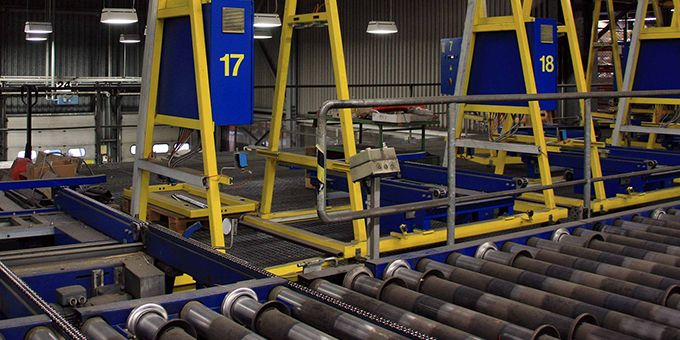Most conversations around the industrial IoT focus on its applications in assembly lines or inventory management. By comparison, processes like water management fly under the radar, but they contain the same potential.
 How Is the IoT Changing Pumping Systems Today?
How Is the IoT Changing Pumping Systems Today?

Megan Ray Nichols | Schooled By Science
It's challenging to overstate the importance of water pumps in the manufacturing industry. These systems are integral to cooling, waste management and fluid transport, but traditionally have efficiency and sustainability issues. IoT technology enables advances like automated pumping systems that address these problems.
As a part of Industry 4.0, many facilities are adopting these technologies in a variety of processes. Still, most conversations around the industrial IoT focus on its applications in assembly lines or inventory management. By comparison, processes like water management fly under the radar, but they contain the same potential.
Water management is ripe for disruption, as 59% of available water goes towards industrial processes in high-income countries. Traditional pump systems are also notoriously inefficient and low-tech. That's starting to change, thanks to the IoT.
Improved Throughput and Productivity
One of the most significant advantages of the IoT across industries is how it enables real-time adjustments. Without real-time measurements, water pump systems deliver consistent levels of throughput until someone turns them off. The inflexibility of this process leads to waste, impacting both cost and sustainability.
On the other hand, with IoT sensors, water systems can measure different areas' needs in real-time. These measurements enable an automated pumping system to adjust its throughput in response to changes in demand. Every process would only use as much water as it needs, virtually eliminating waste.
These IoT sensors would also enable users to de-bottleneck the process through predictive analytics. Readings about usage levels and system performance can indicate when and where any inefficiencies may occur. Users, or the system itself, if automated, could then adjust ahead of time to prevent disruption.
Reduced Energy Consumption
Water systems are typically some of the most energy-intensive processes in an industrial setting. According to the EPA, roughly 80% of municipal water-related costs come from electricity usage. Assuming that industrial water systems exhibit a similar cost breakdown, traditional fluid management can be a significant energy waste source.
Just as automated pumping systems reduce water waste, they can do the same for electricity. Since they adapt to varying circumstances, they never use more energy than necessary. The resulting savings would more than account for any power that the IoT systems consume.
In addition to lowering operational costs, these energy savings will help manufacturers become more sustainable. With a growing number of consumers expecting sustainably produced goods, that will be increasingly critical in the coming years. Any area where facilities can reduce their electricity consumption will help make them more appealing.
Lowered Maintenance Costs
Like any piece of equipment, water pumps can require costly maintenance at times. Given water's tendency to wear down and corrode materials, these systems may encounter repair issues more frequently than others. IoT technologies can enable predictive maintenance, mitigating these costs.
Since they measure system performance, IoT sensors can alert users when conditions might cause a breakdown. Workers can then repair the system before it becomes a more severe issue, preventing costly downtime. Preventive maintenance will also extend the lifespan of the equipment, reducing future ownership costs.
Operational mistakes in older pipe systems can create maintenance problems as well. When control valves open too quickly, air can seep into the pipes, causing a pressure issue called water hammer. IoT-powered automated pumps offer more precision, so they prevent these problems from occurring in the first place.
Customization and Scalability
With traditional water systems, users often have to choose between lower costs and more precise operation. Ordering custom hardware to meet an application's specific needs is typically expensive but serves users better. On the other hand, generic equipment is more affordable but may not provide the functionality some facilities need.
Since IoT equipment is more adaptable, it provides a solution to this conundrum. IoT water system parts can use standard hardware with application-specific software, providing a middle ground between customization and accessibility. With this solution, producing the hardware is still affordable, but the programming can adjust its functionality as needed.
Facilities with unique needs but limited resources won't have to make any compromises. As IoT technology improves, the range of controls this software can offer will expand. Automated water management systems will become increasingly helpful as development continues.
Continuous Improvement
The more use that IoT-enabled water systems see, the more data they collect. Users can extrapolate meaningful insights from this data, revealing areas in which they can improve. These analytics make IoT equipment useful for as long as they're in operation, not just initially.
No matter how much technology a facility adopts, there will always be room for improvement. Data analytics reveal where that room is, even suggesting possible ways to address it. Businesses can then adopt a practice of ongoing improvement, continually cutting costs and boosting productivity.
These analytics also measure the efficacy of any changes to the water system. Users can apply new equipment or workflows and use the readings from IoT sensors to see if or how they've improved. They can then adjust their approach accordingly.
Automated Pumping Systems Expand Possibilities
The industrial IoT enables automated systems to reach their highest potential. Automation and IoT technologies are already valuable independent of one another. Together, they expand what manufacturers can do, offering near-countless opportunities for improvement.
Water pump systems may traditionally cause an abundance of efficiency roadblocks, but they don't have to. With automation and IoT technologies, they can become far more sustainable, reliable and efficient. These technologies are changing water systems forever, and doing so for the better.
The content & opinions in this article are the author’s and do not necessarily represent the views of ManufacturingTomorrow
Featured Product

